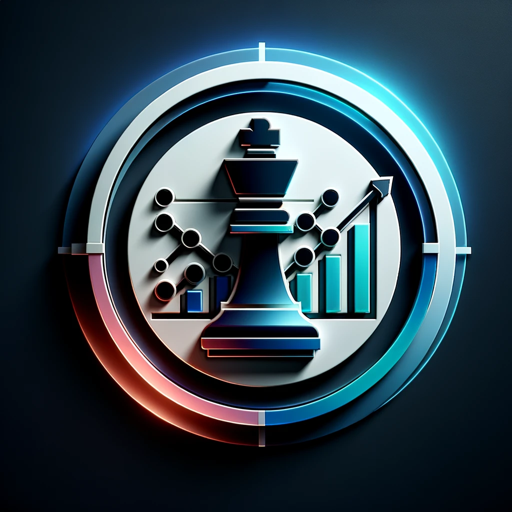TOGAF Business Architect-TOGAF Business Architect Tool
AI-powered tool for TOGAF Business Architecture.
Related Tools
Load More
Business Model Canvas Strategist
Business Model Canvas Creator - Build and evaluate your business model

Enterprise Architecture Copilot
Your adept guide in enterprise and software systems, offering diverse solutions and insights.

Solution Architect
Formal, thorough, and friendly architect for solutions and ADRs.

ArchiMate Architect
Generates ArchiMate models from text

Technical Architect
Seasoned technical architect with experience designing complex enterprise systems.

Enterprise Architect Advisor
Expert in enterprise architecture, guiding in TOGAF and ArchiMate.
20.0 / 5 (200 votes)
Introduction to TOGAF Business Architect
The TOGAF Business Architect is a specialized role within the TOGAF framework, designed to align business strategy with IT architecture. The primary purpose of a TOGAF Business Architect is to define, analyze, and document the business architecture of an organization, ensuring that business capabilities, processes, and organizational structures are well-aligned with the overall enterprise architecture. This alignment helps organizations achieve strategic objectives, optimize operations, and facilitate the integration of business and IT strategies. The role involves creating models that represent the organization’s current and future state, conducting gap analyses, and developing roadmaps to guide the transformation. For example, in a scenario where a company is undergoing a digital transformation, the TOGAF Business Architect would work closely with stakeholders to understand the current business capabilities and processes. They would then map these against the future state, identifying gaps that need to be addressed through new IT systems or process changes. This ensures that the IT infrastructure supports the desired business outcomes, such as improved customer experience or operational efficiency.

Main Functions of TOGAF Business Architect
Business Capability Mapping
Example
A retail company is expanding its online presence. The TOGAF Business Architect creates a business capability map that identifies the key capabilities required for this expansion, such as online sales, customer service, and inventory management.
Scenario
In this scenario, the business capability map helps the company understand the capabilities it needs to develop or enhance to support the new online business model. The map provides a clear view of the current capabilities and highlights areas where investment is needed.
Business Process Modeling
Example
A financial services company is streamlining its loan approval process. The TOGAF Business Architect models the existing loan approval process and identifies bottlenecks and inefficiencies.
Scenario
The process model helps the company visualize the current state of the loan approval process, allowing them to identify areas for improvement. The architect then proposes a new process design that reduces approval time and enhances customer satisfaction.
Alignment of Business and IT Strategies
Example
A healthcare provider is implementing a new electronic health record (EHR) system. The TOGAF Business Architect ensures that the business requirements are clearly defined and that the IT solution aligns with these requirements.
Scenario
In this scenario, the architect works with both business and IT teams to ensure that the EHR system supports the organization's goals, such as improving patient care and ensuring regulatory compliance. This alignment reduces the risk of project failure and ensures that the technology investment delivers the expected benefits.
Ideal Users of TOGAF Business Architect
Enterprise Architects
Enterprise Architects benefit from the TOGAF Business Architect’s ability to bridge the gap between business strategy and IT architecture. They use the business architecture to ensure that IT systems and solutions are aligned with the organization's strategic objectives, providing a comprehensive view that guides decision-making across the enterprise.
Business Analysts
Business Analysts leverage the TOGAF Business Architect to gain a deeper understanding of how business processes, capabilities, and organizational structures interact. This role helps them in requirements gathering, process improvement initiatives, and ensuring that business needs are met by IT solutions.
C-Level Executives
C-Level Executives, particularly CIOs and COOs, use the insights provided by the TOGAF Business Architect to make informed strategic decisions. The business architecture provides them with a clear view of the organization’s capabilities and helps them prioritize initiatives that align with the overall business strategy.

Guidelines for Using TOGAF Business Architect
Visit aichatonline.org for a free trial without login, also no need for ChatGPT Plus.
Start your exploration by visiting aichatonline.org where you can access a free trial of the TOGAF Business Architect tool without the need for any login or ChatGPT Plus subscription.
Understand the TOGAF framework.
Familiarize yourself with the TOGAF framework, focusing on the Business Architecture domain. This will provide the necessary context for effectively utilizing the tool's features.
Identify your business architecture needs.
Determine the specific aspects of your business architecture that need modeling, such as business processes, organizational structures, or information flows. This will guide your use of the tool.
Utilize the tool for modeling.
Leverage the tool’s capabilities to create visual representations of your business architecture. Use its templates, notations, and customization options to build accurate models aligned with TOGAF standards.
Review and iterate.
Regularly review the models you create, ensuring they meet your business requirements. Iterate on these models based on feedback from stakeholders to refine and improve your architecture.
Try other advanced and practical GPTs
Organogram Expert
AI-powered insights for optimal organizational design

Fantasy Football Coach by FantasyPros
AI-powered insights for winning fantasy football.

Everything Else
AI-powered luxury item descriptions

ThemeEngineGPT
AI-powered tool for themed visuals

Polish English
AI-powered precision for legal and professional texts.

Theologia
AI-powered insights into Catholic theology.

Todoist GPT
Boost productivity with AI-driven task management

Create My GPT / GPT Builder
Empower Your Ideas with AI

Picture to Text Reader
AI-Powered Text Extraction Tool

Political Analyst
AI-powered political insights and analysis.

Symbolab Math Solver
AI-powered solutions for math problems
Mulesoft Advisor
AI-powered advice for Mulesoft success

- Business Modeling
- Enterprise Planning
- Process Visualization
- Strategic Alignment
- IT Governance
Common Questions About TOGAF Business Architect
What is the primary function of the TOGAF Business Architect?
The TOGAF Business Architect tool is designed to help enterprises model their business architecture according to the TOGAF framework. It enables users to visualize business processes, organizational structures, and information flows in a standardized and comprehensive manner.
Who can benefit from using the TOGAF Business Architect?
Enterprise architects, business analysts, and IT strategists are the primary users who can benefit from the tool. It is also valuable for any professional involved in designing, planning, or managing business architecture within an organization.
Does the tool require prior knowledge of TOGAF?
Yes, a basic understanding of the TOGAF framework, especially the Business Architecture domain, is recommended. This knowledge ensures that you can effectively use the tool to create models that align with the framework's standards.
Can the TOGAF Business Architect tool be integrated with other enterprise architecture tools?
Yes, the tool is often designed to integrate with other enterprise architecture tools and platforms, allowing for seamless data exchange and collaboration across different architectural domains.
What are the key features of the TOGAF Business Architect?
Key features include pre-built templates for TOGAF-compliant models, drag-and-drop modeling capabilities, customizable notations, and the ability to generate detailed reports and documentation. These features help streamline the business architecture development process.